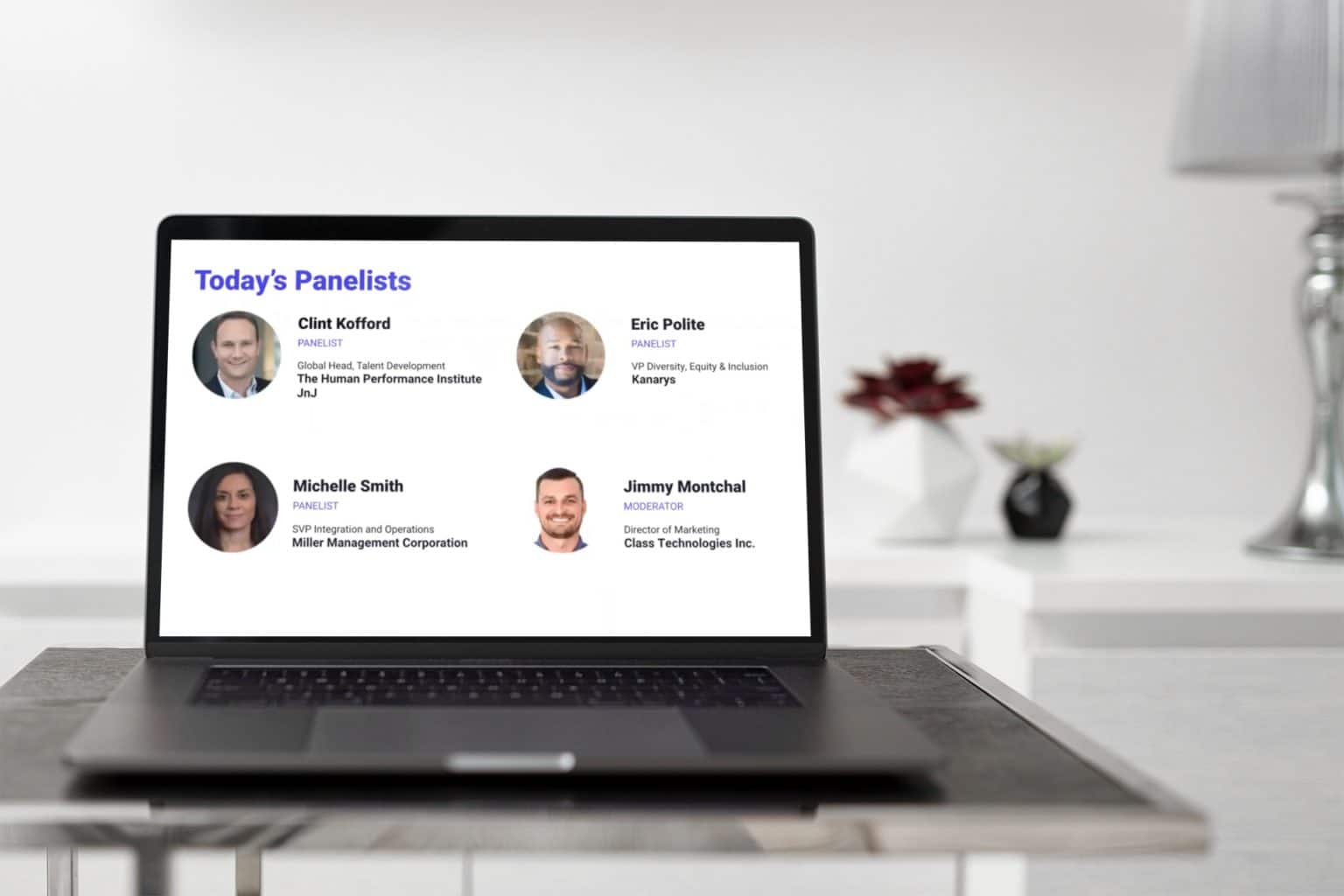
Class is the next generation virtual classroom for K-12, higher education, government agencies, and the workplace. Contact us today to schedule your live demo and see Class in action.

Class is the next generation virtual classroom for K-12, higher education, government agencies, and the workplace. Contact us today to schedule your live demo and see Class in action.

As companies around the country—and around the world—have quickly shifted their workforces from an in-person to a hybrid work model, they’ve faced numerous challenges, but have also uncovered many new insights and best practices that will serve them well now and into the future. From an employee relations and management perspective, engaging remote employees is a top priority in our ‘new normal.’
Remote and hybrid work models have presented organizations with some unique challenges:
It’s expected that the growing number of employees working remotely will remain high even after the pandemic. Companies need to establish practices to keep employee engagement and productivity high.
Fortunately, companies have learned during the pandemic that remote employees don’t have to be “out of sight and out of mind” as has long been feared by supervisors and managers. They’ve learned that there are many ways they can engage employees remotely and that technology can be a great aid in doing just that. Here we take a look at “4 Tips for Engaging Remote Employees” shared by panelists at one of our recent webinars:

One of the common lamentations about remote work is that it eliminates opportunities for impromptu, or casual, interactions. However, that isn’t necessarily true.
Even when employees are working remotely, casual interactions can still take place — and technology like Class can help to drive these interactions. Ironically, though, informal conversations in the virtual workplace require thoughtful planning. Some options to consider:
Recognizing that many employees are craving interpersonal interactions these days and providing opportunities for them to connect and engage with their colleagues, customers, and others can be a powerful way to build employee engagement.
Trust in the workplace encourages employees to offer their ideas and solutions. Foundationally, it’s important to ensure that employees understand expectations and how their work helps to drive organizational objectives and achieve goals.
In addition, transparency is a must for keeping remote employees engaged. Employees need to be kept informed of issues that impact their work and the organization. The past year has provided a stunning example where uncertainty reigned, and yet transparency and consistency remained key for building trust among employees and other audiences.
A willingness to share information in both good times and bad, when answers are both obvious and unknown, and to invite employees to engage in two-way interactions—whether onsite or online—goes a long way toward establishing and building trust in a remote or hybrid workplace.

Employees want to feel seen and valued. But recognition doesn’t need to come only from the top of the organization—recognition from peers is important too. Organizations need to consider ways that recognition can take place both in formal ways (like calendared appreciation events) and informally. Setting the stage, and the example, through their own actions, leaders can model through their own behaviors how to recognize others in big and small ways.
Importantly, recognition can be very individual. Leaders need to understand how employees respond to recognition and the type of recognition they most value. While recognizing employees during virtual meetings is clearly important, especially during times when they may be feeling somewhat isolated, “old-school” forms of recognition also work well. Sending hand-written cards and notes, for instance, can provide a very tangible and heartfelt way to recognize employee efforts.
Both formal and informal recognition efforts need to work together to build a foundation that engages remote and in-office employees.
“You can’t manage what you don’t measure.” We’ve all heard that quote before, and it’s absolutely true. Keeping tabs on employee engagement and satisfaction through surveys and polls can provide important insights for ongoing improvement.
Something as simple as the Net Promoter Score (responses to the question: “Would you recommend us as a great place to work?”) can yield important insights that, when tracked over time, can help provide early warning signs when employee engagement may be sliding.
But don’t just focus on quantitative feedback from surveys. Qualitative feedback—like casual conversations that take place both on-site and online can provide important insights as well.
Class offers easily accessible and intuitive tools to put all of these four tips into play in your organization, with employees both onsite and off.

While we were originally focused on solving communication and engagement challenges for educational institutions, we quickly recognized the need for the same type of solutions in the hybrid workplace. Our web conferencing platform has grown to offer organizations the tools they need to conduct meetings, provide training and engage employees. Learn more about how Class can provide the seamless support you need now and into the future.
Our panelists for “4 Tips for Engaging Remote Employees in the Evolving Workplace” shared a wealth of information during this webinar. We invite you to tune in to gain more insights about how to best engage employees in a hybrid working environment.

Class is the next generation virtual classroom for K-12, higher education, government agencies, and the workplace. Contact us today to schedule your live demo and see Class in action.

Class is the next generation virtual classroom for K-12, higher education, government agencies, and the workplace. Contact us today to schedule your live demo and see Class in action.
Get our insights, tips, and best practices delivered to your inbox

Sign up for a product demo today to learn how Class’s virtual classroom powers digital transformation at your organization.

Features
Products
Integrations